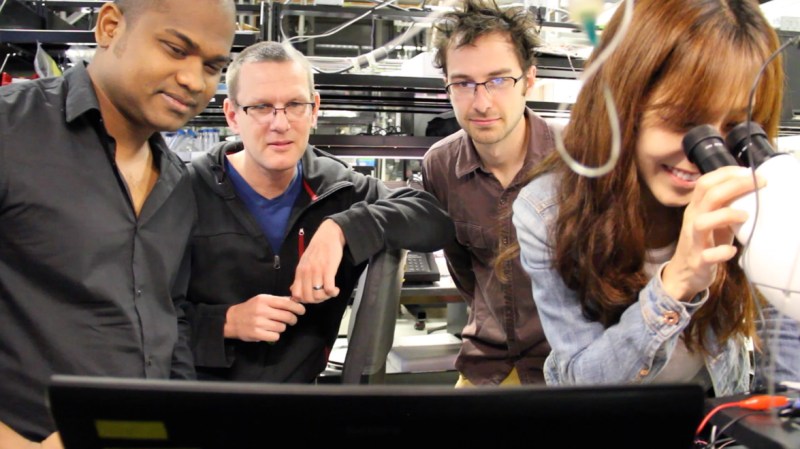Assistant Professor of Bioengineering, Ingmar Riedel-Kruse, and his team have made several advances in the field of interactive biotechnology, including the development of technology that allows researchers to interact with microorganisms using touch screens.
Such advancements could potentially lead to self-contained labs that can be remotely operated from anywhere in the world.
These interactive biology programs are referred to as “biotic games.”
“We aim to build systems that allow you to interact with microorganisms with the same convenience as you currently interact with electronic devices,” Riedel-Kruse said.
One such system was tested at a kiosk at the Tech Museum of Innovation in San Jose, where guests could use touchscreens to shine patterns of light on microorganisms and cause a response from the organism. The touchscreen showed a microscope’s view of a group of cells; when guests drew light patterns on the touchscreens, corresponding patterns of light were shone in the sample.
The kiosk capitalized on the fact that the microorganisms reacted differently to different kinds of light; for example, they avoided blue light. This let the visitors play with the organism by drawing light patterns so as to encourage different behaviors.
A similar idea was used in a class that Riedel-Kruse recently taught about bioengineering devices; students developed “biotic games” in which a cell’s exposure to light was modulated by using a joystick; Riedel-Kruse used the process to discuss the ethics of using life for the purposes of a game.
In addition to games, this technology can be used in the creation of labs operated by remotely directing robots called Biotic Processing Units, or BPUs.
Zahid Hossain, a doctoral student working with Riedel-Kruse, designed a BPU using LEGO Mindstorms technology, which had the capability to examine and interact with petri dishes.
Students in a graduate course were able to conduct an experiment with the slime mold Physarum by guiding the BPUs with their smartphones. The students directed the robot to drop different patterns of oatmeal in petri dishes and then have the BPUs track the activity of the Physarum in the dishes.
Looking forward, Riedel-Kruse anticipates that this type of technology could be used to allow students to learn through remotely-operated experiments. He also foresees possible applications related to personal monitoring.
“In the future you might get sensors and actuators on your phone, for example, that might allow you to interrogate the microbiota of your skin,” said Riedel-Kruse.
Contact Skylar Cohen at skylarc ‘at’ stanford.edu.
